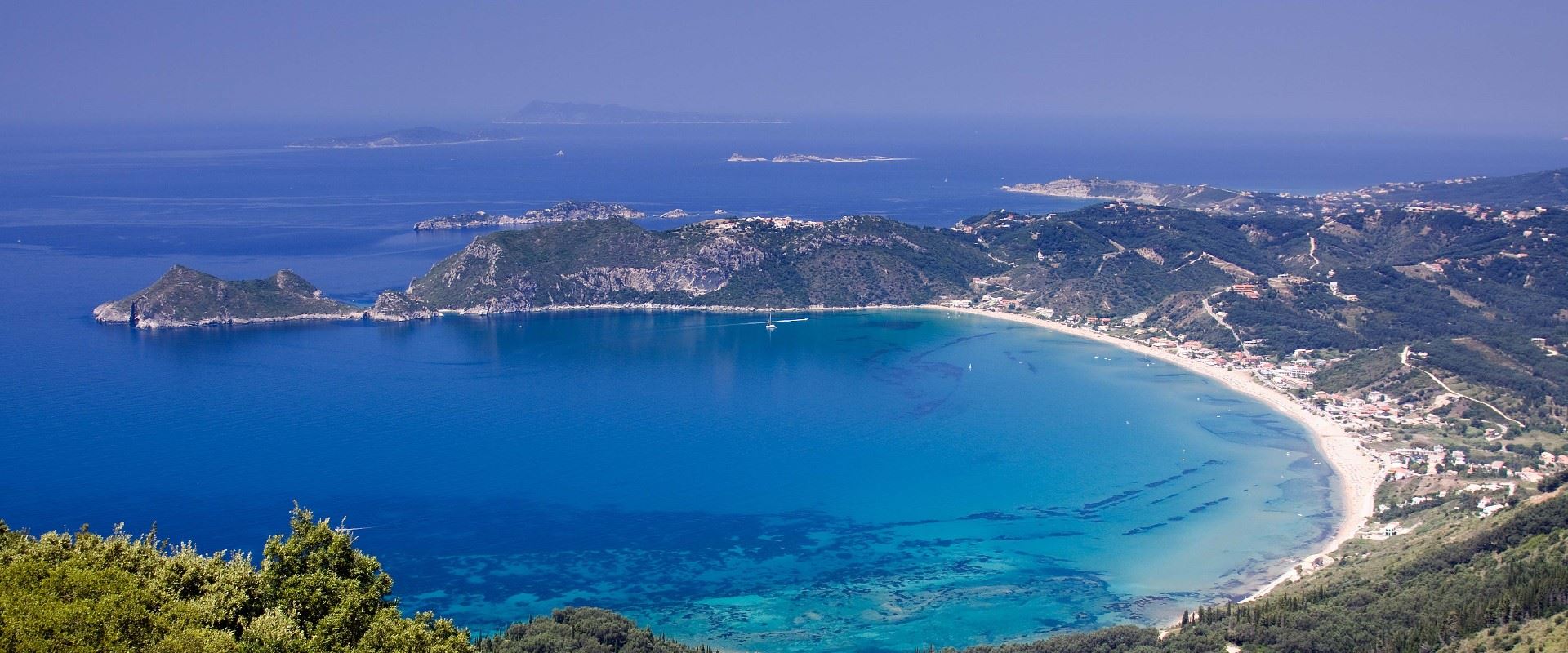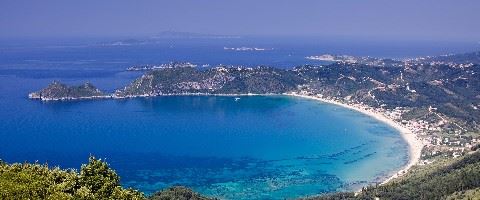Beach and Cultural Adventures in Corfu
Corfu provides the perfect blend of relaxation and exploration.
From vast expanses of golden sand to small pebbled coves naturally shaded by pines and cypress trees, and from organised beaches with tavernas and waterfront bars to those where you can watch the sunrise in solitude, there is a spot of Ionian coastline to suit all. Not to be missed is the 3km Halikounas beach, set next to Lake Korission, which is a magnet for birdlife.
Another favourite for the Sunvil team and our guests is Aghios Gordis on Corfu's west coast. Stay at one of our handpicked cottages a stone's throw from the 1km beach - from where some of the best sunsets on the islands can be enjoyed. This is the perfect spot for a Corfu beach holiday.
Head inland to discover the island's rich culture. Here you'll find wonderful atmospheric villages such as Old Perithia, where time has seemingly stood still, and artisans and galleries galore - the island's olive wood artefacts are worthy of note. The views as you wind along the mountain roads will take your breath away, and there is nothing better than taking a short stop at a traditional kafenion where you will receive a warm welcome alongside the locals. Read our blog about the Top Things to See and Do on Corfu for further inspiration.
Excursions can be pre-booked for guests including olive oil tasting, jeep tours, island cruises and excursions to Sivota on the Greek mainland.
Our holidays offer complete flexibility. Popular options include: beach stays, combinations between Corfu Town and a coastal stay (3 nights + 7 nights - for example), a multi-centre fly-drive (southern Corfu + northeast Corfu) and multi-island holidays including Corfu + Paxos.
Apartment and Villa Holidays on Corfu
For those searching for a peaceful escape, our apartment and villa holidays offer the perfect balance between comfort and adventure. Each property has been handpicked by our destination specialists and chosen for its location, facilities and ambiance. Our aim is to allow you to unwind in style while having time at leisure to explore the island’s stunning landscapes, historical sites and serene beaches.
Consider amongst others:
Book Your Corfu Experience with Sunvil
Sunvil’s Corfu package holidays are designed to make your holiday as smooth and enjoyable as possible. Using our wealth of knowledge and experience, we will ensure that every detail is tailored to suit your needs.













